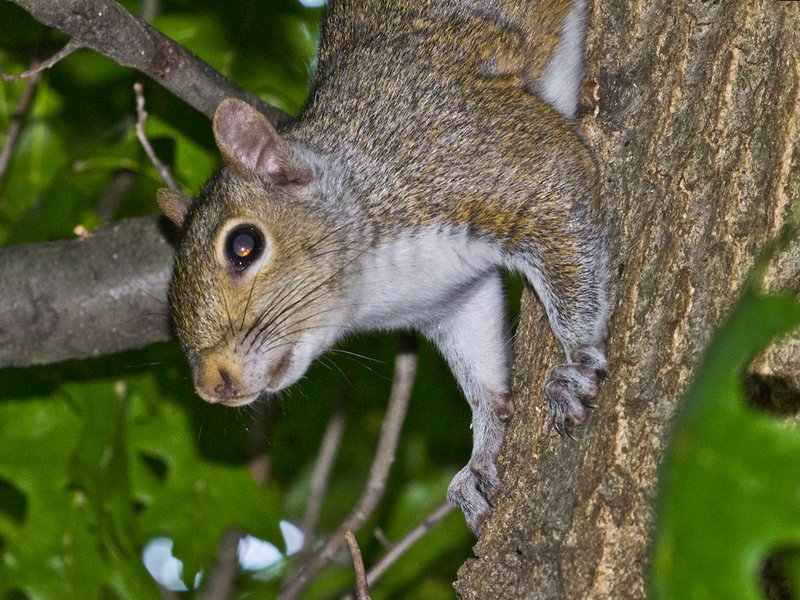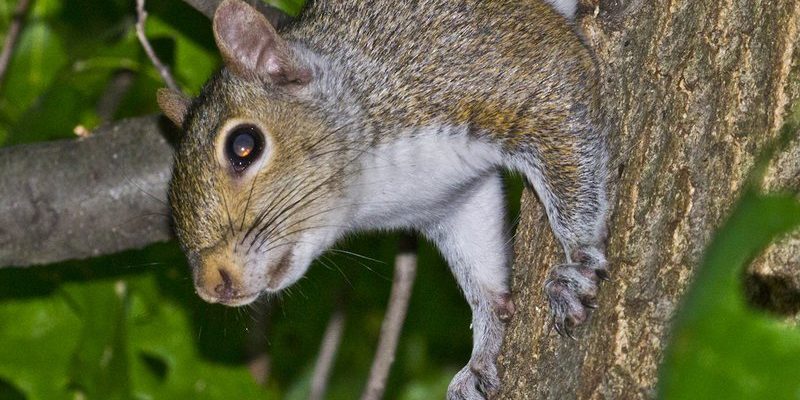
Imagine being a squirrel in a forest during winter, the ground covered in snow and the trees bare. It sounds tough, right? Well, tree squirrels have evolved remarkable skills to survive just about anywhere, including cold, snowy environments. From storing food to creating cozy nests, these agile critters have got survival down to an art. Let’s dive into the strategies they use to stay alive when things get rough.
The Basics of Tree Squirrel Survival Strategies
Tree squirrels showcase a range of survival strategies, beginning with their foraging skills. During warmer months, they gather food to prepare for harsher times. They primarily rely on nuts and seeds, but that’s not all. Squirrels are opportunists—they’ll munch on fruits, fungi, and even insects if they can find them.
A key tactic involves food caching. This means they hide their food in various locations so they can retrieve it later. Think of it like a secret treasure hunt, where each hidden stash is a bounty waiting to be discovered. Some squirrels will even bury nuts in the ground, only to forget about a few. Fortunately, this accidental oversight leads to the growth of new trees, contributing to the ecosystem!
In addition to foraging, tree squirrels are also adept at using their hind feet and sharp claws for climbing. With their unique build, they can easily navigate branches, avoiding predators and getting to food sources that larger animals can’t reach. This agility not only protects them but also gives them access to a variety of food options.
Building Cozy Nests: The Squirrel Abodes
When you think about survival, having a safe place to rest is crucial. That’s where a tree squirrel’s nest, or drey, comes into play. These nests are typically made from leaves, twigs, and sometimes even feathers. They’re often built high up in trees, which helps shield them from predators like hawks and cats.
Tree squirrels take their nesting seriously. Depending on the weather, they may build multiple nests in different locations. In winter, they create insulated nests to keep warm. By lining their nests with soft materials, they can trap heat and stay cozy, even when the temperature drops.
Interestingly, these dreys are often quite spacious. Nesting is not just for sleeping; it’s also a spot for raising young. The safe, elevated environment offers protection from the elements and predators alike. Have you ever stumbled across an abandoned drey? It’s like finding a tiny, hidden home in the trees!
Adapting to Weather Changes
Here’s the thing: tree squirrels are masters of adaptation. They’re equipped to manage extreme weather conditions, whether it be intense heat in the summer or biting cold in the winter. When temperatures drop, these furry creatures tend to become less active during the day. Instead, they may stay nestled in their warm nests, conserving energy until conditions improve.
During the summer, tree squirrels might change their behavior to beat the heat. They’ll often forage in the early morning or late evening when temperatures are cooler. You might see them lounging in shaded tree branches during the hottest part of the day, just like we would at the beach with a good book!
Their thick fur plays a significant role, too. As the seasons change, their fur thickens to provide extra warmth in winter. It’s not just about looking good; this adaptation is crucial for survival in harsh conditions.
Social Behavior: Working Together
While tree squirrels are often seen as solitary creatures, they can also demonstrate social behavior, especially when it comes to survival. In harsh conditions, they may work together to find food or alert each other of danger. Think of them as a little community looking out for one another.
Sometimes, you might spot two or more squirrels playing together in the trees. This isn’t just for fun; it’s also a way to strengthen social bonds and develop skills needed for survival. Playing helps juvenile squirrels learn how to navigate their environment and avoid threats.
Interestingly, these interactions aren’t always friendly. Squirrels tend to be territorial, especially when food is scarce. They’ll make loud chattering sounds to warn intruders to back off. It’s like an early warning system—an essential survival tool when resources are limited.
Finding Water: Thirsty Squirrel Strategies
You might be wondering how tree squirrels stay hydrated. After all, water is just as crucial to survival as food. In the wild, squirrels often get their hydration from the foods they eat, like fruits, which have high water content. However, in dry seasons, they need to be more resourceful.
Squirrels will often seek out drinking spots, whether it’s puddles left by rain or streams they come across. They have a keen sense of smell that helps them locate water sources nearby. During particularly hot or dry spells, some squirrels will even dig under the snow to find moisture—now that’s dedication!
If you ever see a squirrel scrunching up their nose, they may be tasting the air for moisture. It’s an interesting survival tactic that showcases their resilience in tough environments.
Predator Awareness: Staying Safe
In the wild, survival isn’t just about finding food or shelter; it’s also about avoiding becoming someone else’s lunch. Tree squirrels have a range of strategies for staying safe from predators. Their agility and ability to climb trees quickly are their first lines of defense.
When they sense danger, squirrels make quick escapes by darting into a tree or hopping to a nearby branch. They also use their impressive vision to keep an eye out for predators lurking nearby. Whether it’s a snake on the ground or birds of prey overhead, tree squirrels are always on alert.
Moreover, tree squirrels are known for their distinctive alarm calls. When one sees a predator, it’ll emit a series of sharp, loud sounds to alert others in the area. This communication is vital for survival, creating a network of vigilance among the squirrel population.
The Importance of Ecosystem Balance
Understanding how tree squirrels survive in harsh environments gives us insight into their role in the ecosystem. They aren’t just adorable little creatures; they play a big part in maintaining balance in their habitats.
For instance, when squirrels cache seeds, they often forget some of their hidden treasures. These forgotten seeds have the chance to sprout and grow into new trees. Thus, tree squirrels effectively help with forest regeneration. It’s a win-win!
In addition, their presence supports other wildlife. Predators that feed on squirrels, like hawks and coyotes, depend on their populations. This interdependence highlights the delicate balance of ecosystems. When we protect tree squirrels and their habitats, we’re also safeguarding the larger environment.
By learning about how tree squirrels survive, we can appreciate the complexity and interconnectivity of nature. They may seem like simple animals, but their behaviors and adaptations remind us how resilient life can be.
In conclusion, tree squirrels demonstrate remarkable survival techniques that help them thrive in harsh environments. From clever food caching and cozy nests to adapting to weather changes and staying alert for predators, these little critters have honed their survival skills over time. So next time you spot a tree squirrel at the park or in your backyard, take a moment to appreciate the tiny marvels of nature they truly are!

